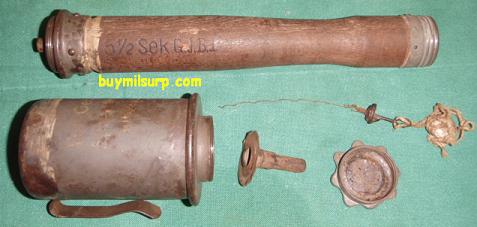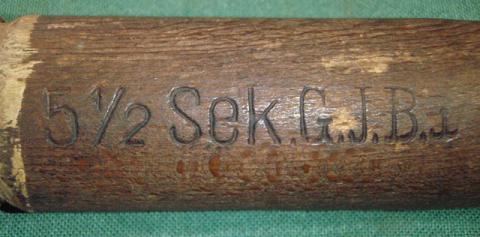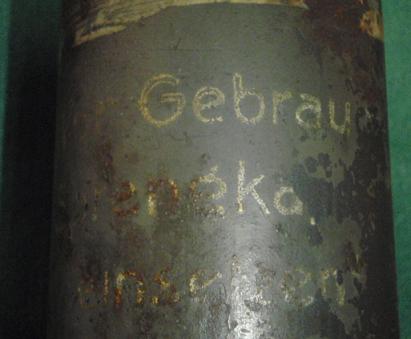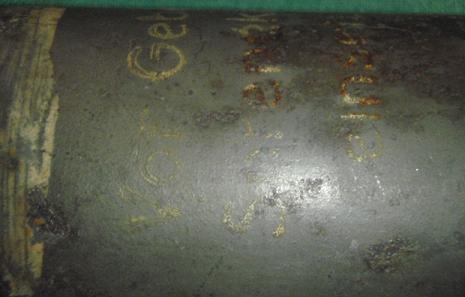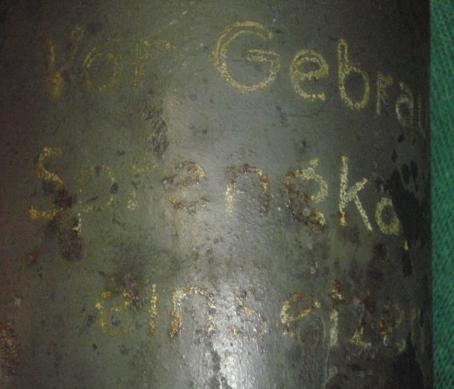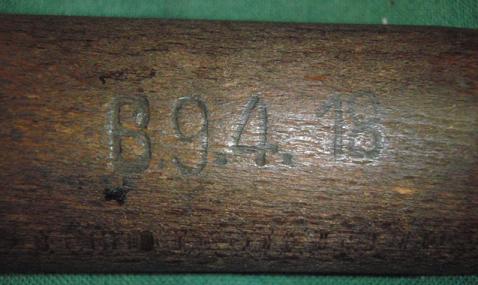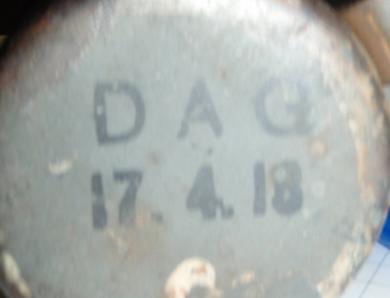INFO ONLY. NOT FOR SALE. P89-2
The German stick grenade design began in 1915, improving on the Pétards Raquettes concept which was a rudimentary early war improvised stick grenade.
The basic design consisted of a heavy sheet metal can, filled with explosive, screwed to a wood handle. About 10 different variations were developed during WWI, each exploring different fuze mechanisms, explosive fillers and fabrication techniques. Fuzes were first friction delay, then impact, returning again to friction delay. Designs evolved, becoming lighter and simpler to manufacture.
The stick grenade is easily held and thrown. It's shape also prevents rolling on the ground, a distinct advantage on sloped terrain. It also can be easily bundled together with other stick grenades making a larger weapon. On the negative side, it is bulky and cannot be thrown as far as an "egg" shaped hand grenade.
By 1917 the final form was established, consisting of a large sheet metal warhead with a belt hook, screwed to a hollow wood handle containing a friction fuze with a pull lanyard.
The detonator was inserted in the field. Instructions were printed on the grenade reminding the user to do so: Vor Gebrauch Sprengkapsel Einsetzen "BEFORE USING, INSERT A DETONATOR
The explosive is contained in a factory sealed warhead made of light sheet steel. A delay fuze is installed in the hollow handle attached to a lanyard. The lanyard reaches to the bottom of the handle with a heavy porcelain ball attached, so that when the end cap is unscrewed the ball drops out. The end cap has a spring-loaded cardboard disk that acts as an anti-rattle feature, pressing the ball into a recess in the end of the handle.
To use, a detonator is attached to the fuze and the handle is screwed into the base of the head. There is a fuze-well in the head to accommodate the protruding detonator. The end cap is unscrewed and the ball drops out. The lanyard is pulled with the left hand as the right swings back to throw.
The fuze is made up of a delay element in a metal tube. A wire with an abrasive surface is set in a friction sensitive ignition compound and enclosed in the bottom end. Yank the wire out, via a lanyard, and it ignites the compound starting the 5-second delay
